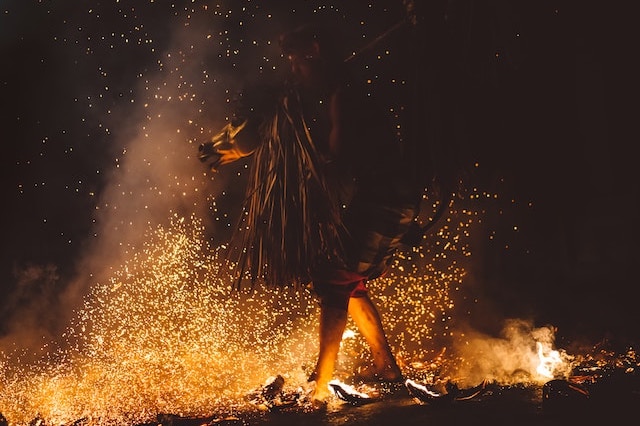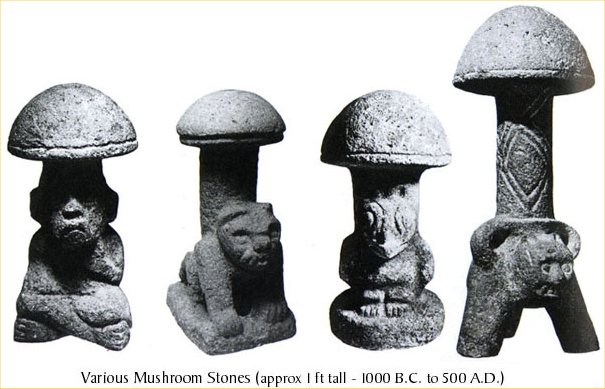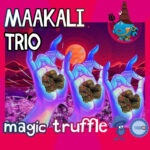When Western anthropologists began to study indigenous cultures in the middle of the 19th century they noticed some distinct similarities. It seemed that almost all of these societies had belief frameworks that sharply contrasted with the materialist mindset of the West. Their belief systems could all be placed under the umbrella of animism.
What is Animism?
To put it simply; animism is the belief that all things, from plants, to inanimate objects, to natural phenomena such as thunder and lighting, have a living soul. In essence, that everything is alive.
The term Animism comes from the Latin ‘Anima’, a translation of the Ancient Greek ‘psyche’ meaning ‘air, breath and spirit.’ It is that elusive thing — the soul. Plato, (who always knew what was up) spoke of the ‘Anima Mundi’ in ancient times;
“This world is indeed a living being endowed with a soul and intelligence, a single visible living entity containing all other living entities, which by their nature are all related.”

Everything Has a Spirit, Everything Has a Purpose
This relationship between all things, each with their own motivations, usually occurs beyond our human perceptions. But animism believes that the motivation of a rock, the goal of a squid, the ambition of a rain cloud, all have interlinked consequences for our existence.
Much of human mythology throughout history is related to animistic or anima-adjacent beliefs, from Sun Gods to sacred caves. It is also comparable to Chi in Taoist tradition and Prana in the Vedic tradition. It is found in cultures that still have a close relationship and reverence for nature; so, as you can imagine, it doesn’t jive so well with our modern world where greed has often reduced nature and living beings to their worth only as a resource. If you believe everything is a web of interlinked souls, the decimation of natural areas or the mistreatment of animals becomes unthinkable. However, in recent years interest in this ancient belief has begun to grow.

All pretty fascinating stuff, right? But where do psychedelics come in?
Psychedelics and Animism
Well, anyone who has experienced a magic mushroom trip will know that at the very least, psilocybin can induce a sense of connection with fellow humans, animals, nature, and even a higher power. At most it can result in a total death of the ego — a realization that there is no separation between living things — which is basically animism, in a nutshell.
A Chicken-and-Egg Situation?
And would you believe, that although not a prerequisite for animismist societies, many of them who still hold these beliefs do have a tradition of natural psychedelic use. Of these, the first we probably think of are Amazonian and Mesoamerican societies with shamanistic practices. These practices are the arena in which entheogens such as psilocybin mushrooms, ayahuasca and Salvia divinorum were utilized as part of animistic traditions. Aided by these psychedelic plants and fungi shamans were able to access the mystical webs of anima and bring back wisdom to their communities.

The not-so-secret-anymore Ancient Greek rituals the Eleusinian Mysteries were also derived from a merging of the psychedelic and animistic. Participants would drink a mind-altering concoction of psychoactive plants and herbs, called kykeon as part of their initiation. At this time in Ancient Greece it was believed that everything was connected to nature; all living things, objects, places, and elements had a spirit. Kykeon helped them connect to this mystical web.
Additionally, many religions including the first Hebrew religions were animist in nature, based around worshiping the life force they believed emanated from natural objects and elements.
The Psychedelic Renaissance and Animism: Just in Time?
With the growing acceptance of psychedelics across the world, triggered by their potential as therapeutic tools, more people than ever are trying them. And as more and more people realize they are dissatisfied with modern society, how we are treating each other and how our relationship with nature and living beings in general is, could this explain why animism is again being adopted as a view that not only makes sense, but also makes us kinder?
Using Panpsychism to Understand Consciousness

It is not just in terms of spirituality that these sorts of ideas have been churning. Panpsychism, a slightly more moderate version of animism, is currently a hot — although sometimes controversial — topic among neurologists and philosophers who explore the problem of consciousness. They propose that the universe must be conscious, as consciousness, such as ours, could not exist if it was not already present and inherent. To differentiate between animism and panpsychism you could say that animism sees the river as a being with a spirit and an entity, whereas panpsychism would see the river as made up of clusters of zillions of smaller consciousness. Philosopher Philip Goff, an advocate of panpsychism explains;
“Consciousness, for the panpsychist, is the intrinsic nature of matter. There’s just matter, on this view, nothing supernatural or spiritual. But matter can be described from two perspectives. Physical science describes matter “from the outside,” in terms of its behavior. But matter “from the inside”—i.e., in terms of its intrinsic nature—is constituted of forms of consciousness.”
In some ways both animism and panpsychism announce that we, as humans, are not special in our consciousness. But, don’t get sassy. Instead they propose something much more exciting — that everything is alive in some way. In fact — everything is special — and we are part of it. Once again, it kind of sounds like a shroom trip realization, right?

Working Animism into the 21st Century
And so, back to the present day, where animism is looking to many like a real prospect to guide us in the shaky times we find ourselves in. As a way to help build a regenerative, caring, culture that nourishes the world, animism may actually have potential.
Shroom-world darling, mycologist Paul Stamets aligned himself with animist thought in his influential book Mycelium Running. In it, he presented his theory of a “…living mycelium network that manifests the natural intelligence imagined by Gaia theorists.” (Gaia being the personification of the Earth as an entity.) Stamets believes this ‘natural intelligence’ is a force of good, motivated towards the well-being of the whole planet. He adds “Good is not only a concept, it is a spirit“.

Making our way to a more animistic way of thinking won’t always be easy. The last few hundred years have firmly entrenched a ‘materialist’ mindset in most of us. This mindset believes that combinations of matter create animation, rather than animation or ‘spirit’ being innate. Therefore to start thinking of each object as its own being, rather than just ‘matter’ to be used and abused, will take a bit of a perspective shift.
Can Magic Mushrooms Reconnect Us to Animism?

We know that ancient humans, all across the world, had the ability to see the spirit in everything. We still have it in us, but it has become buried. Could natural psychedelics, such as magic mushrooms, themselves from the earth, be the way to rediscover this connection?
Scientific evidence from clinical trials show that the effects that last the longest from a psychedelic experience are the feelings of connectedness with nature, other humans and the whole universe. Psychedelics can teach, or remind us, that the world is alive with meaning and magic. To be connected to the world is to be a part of it. Pretty trippy, huh?





